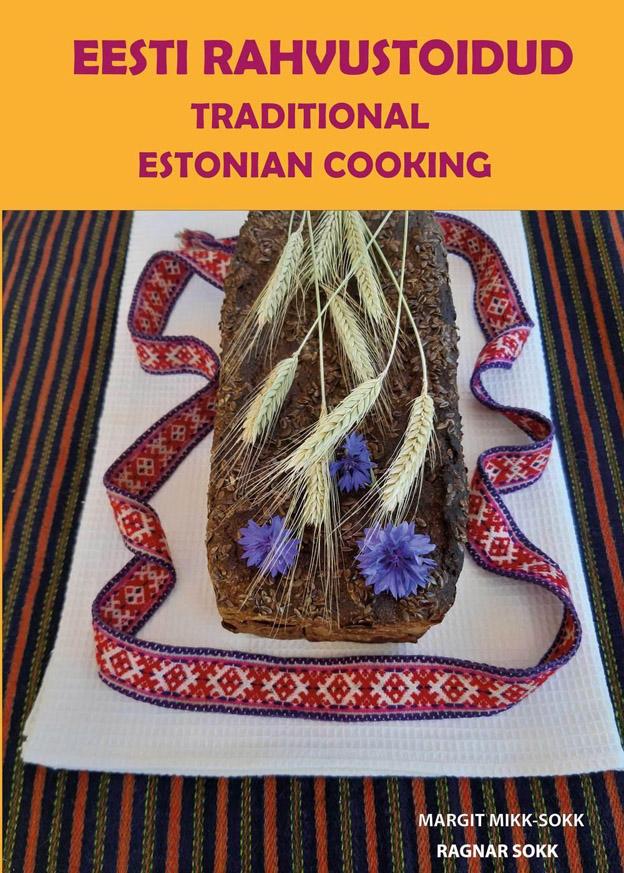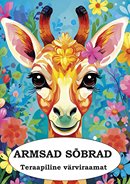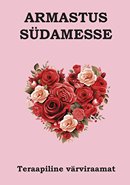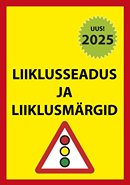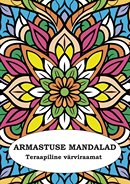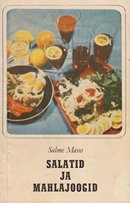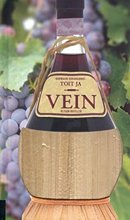Traditional Estonian cooking
Eesti rahvustoidud
„Traditional Estonian cooking” on kõvakaaneline raamat. Raamatu seisukord: uus.
„Traditional Estonian cooking” – tutvustus
Traditional Estonian cooking – introduction
Estonia, a small country with a northern climate, is located by the Baltic Sea, where one finds wild nature, kilometre-long stretches of forests, meadows and empty sandy beaches. There is an equivalent of 2 hectares of forest per each inhabitant. Estonians have been living on this rocky limestone-rich stretch of land for more than 5,000 years.
This book contains typical Estonian dishes, many of which are easily prepared and provide surprisingly good taste experiences. The book includes some dishes that are specifically Estonian – trying them guarantees a really exotic experience.
Traditional Estonian food may be categorised as rustic farm cuisine. Since people began to cultivate this land, different kinds of grain have been used for making food. The most important food was leavened rye bread. Black bread is the symbol of food; all other food has a complementary status. The bread was considered to be holy. An old Estonian proverb says: “Respect bread; it is older than us.” Black bread is still very much respected in Estonia today. In addition to bread, scones were also baked from an unleavened barley flour dough, and later on, brown wheat bread and white bread were baked for special occasions. Kama powder is also typical Estonian cereal food; kama is a thick flour made from boiled, dried and grounded mixed grain usually served with sour milk.
Cabbage, turnip and swede were the most common vegetables at that time. Potatoes began to be widely consumed at the end of the 19th century and remain indispensable on our tables today. People living by the coast have always eaten fish with potatoes, since the latter’s introduction. The Estonian national fish is the Baltic herring, with the local speciality being Tallinn sprat, which is seasoned with 12 different spices. This particular recipe dates back several hundred years.
Food made from eggs was not common among old Estonians, though scrambled or boiled eggs were eaten on Sundays. Of dairy products, fresh and sour milk, butter and curds were used. Common drinks included kvass and mead, and beer was brewed for special occasions.
The meat was not very common on the tables of peasants. Cattle were slaughtered in autumn; offal was used at once, while the meat was salted or smoked. Brawn, made by boiling pig’s head, feet and shank, is a dish that adorns many Estonian dinner tables and is unique due to its cooking process. Sausages were made for special occasions by adding meat and blood to groat porridge. This speciality can still be found on every Estonian’s table at Christmas time. Sauerkraut and sauerkraut with barley and pork, which are also on the menu in Estonia at Christmas time, are also unique in the world.
In the second half of the 19th century, the proprietary relationship, economic conditions and eating habits changed in Estonia. The primary external influence came from Germany and Russia via the towns and manors. Grocers began to sell salted herring, semolina, rice, sugar, coffee and spices. Women’s associations started to organise cooking courses and the practice of canning food spread, which is still popular today. As Estonia has an abundance of forests, people have always liked to pick berries and mushrooms.
During the 1920s and 1930s, new kinds of dishes emerged in Estonian cuisine such as potato salad, pickled pumpkin and cucumber, liver paste, rissoles, mashed potatoes, stuffed cabbage leaves, kissel, semolina cream, cakes, etc.
In the fifty years after World War II, Estonian eating habits were influenced by Russian cuisine. As a result, we now have dishes such as beet salad, borsch, solyanka, shashlik, minced meat dumplings, etc. As there were food shortages during that time, the variety of food products and spices was limited.
Since the 1990s, Estonian cuisine has been open to new trends from all over the world. You can now find a variety of eateries in Estonia ranging from pizza restaurants and sushi bars to African and Brazilian restaurants. Despite the wide range of opportunities and choices, Estonians love tradition and still serve national dishes on special occasions.
Enjoy your meal!
– Margit Mikk-Sokk
Traditional Estonian cooking – contents
Introduction
Appetizers
• Estonian Quark Cheese
• Beef Tongue in Aspic
• Pickled Herring with Sour Cream
• Tallinn Spicy Sprats
• Fried Baltic Herrings in Marinade
• Stuffed Eggs
• Oat Flummery
Soups
• Pea Soup with Smoked Pork
• Sauerkraut Soup
• Suulliim – Cold Soup with Beetroot
• Milk Dumpling Soup
Salads
• Wild Mushroom Salad
• Fresh Cucumber Salad with Dill
• Estonian Potato Salad
• Estonian Beetroot and Herring Salad
Mashes
• Southern Estonian Potato-Barley Mash
• Mashed Potatoes
Main coarse
• Meat Jelly
• Black Pudding (Blood Sausage)
• Estonian Sauerkraut with Barley Grits
• Estonian Hotpot
• Roast Pork
• Fried Liver and Liver Sauce
• Mushroom Sauce
• Baked Potatoes with Bacon Slices
• Cabbage Rolls
• Meat Loaf
Beverages
• Honey Mead
• Kvass
• Home Brew
Desserts
• Baked Apples with Vanilla Sauce
• Kama
• Estonian Sweet Rye Bread Soup
• Semolina Mousse
• Semolina Dessert with Fruit Soup
• Berries Kissel
Breads and baked goods
• Estonian Dark Rye Bread
• Unleavened Barley Bread
• Fresh Rhubarb Pie
• Carrot Pies
• Gingerbread
• Apple Cake with Cardamom
• Shrove Tuesday Buns
Raamatuga „Traditional Estonian cooking” seonduvad märksõnad: eesti, rahvustoidud, kokaraamatud, rööptekstid
Raamatu „Traditional Estonian cooking” tehnilised andmed
„Traditional Estonian cooking” on kõvakaaneline raamat, 128 lk; 17,4 × 24,5 cm; ↔ 1,3 cm; 492 g.
Raamat „Traditional Estonian cooking” on Laos nr 4, saame postitada või kontorisse tuua tellimisjärgsel TÖÖPÄEVAL.
Raamatu „Traditional Estonian cooking” ilmumisandmed: Tulip, 2019
ISBN/EAN: 9789949735327
Ostke raamat „Traditional Estonian cooking” hinnaga 27.97
Veel üllitisi „Traditional Estonian cooking” autori(te)lt:

Eesti rahvustoidud
27.97

Kingin sulle tervist
17.97
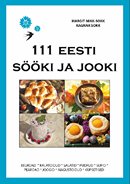
111 Eesti sööki ja jooki
27.97

Ta lendab mesipuu poole
14.50

Rasmuse kokaklubi
15.75

Kaota kaalu!
13.90

Kingin sulle tervist
11.99

Parimad pühadetoidud
24.74
Soovitame lisaks väljaandele „Traditional Estonian cooking” vaadata ka neid trükiseid:

Koržetsi kalaraamat
15.95

Paleo toitumine
27.97

Vana aja retseptiraamat
24.74
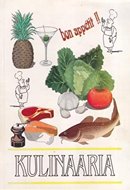
Kulinaaria: õpik
17.97

Salat, mu arm
27.97

Supra
24.90

Vanaema hoidised
34.94

Nadja Viinis
15.90

Supile!
22.25

Hullult hõrgud hoidised
23.93

Paastuköök
19.79

Pioppi dieet
24.94

100 võikreemist lille
24.42

Hoidistaja salaraamat
17.97

Toit, kirg
21.70

100 magustoitu
15.95

Minu pidu
14.74

Veise- ja lambaliharoad
24.90

Eesti kokkade kokaraamat
19.90

Wend Weis
18.81

Võileivad
1.40

Talvesmuutid
26.96

Jõulud
14.74

Lean in 15
19.91

Tulge külla!
24.94

Taimetoidud
21.90

Väike kringliraamat
23.93

Armastusega Kihnust
23.93

Setost saarteni
21.70

Väike marjakoogiraamat
21.70

Õunatoidud
11.90

Tänavatoit
21.70

Hiina toidud
12.92

Kalakoka ABC
12.92

Sahver: hoidised
14.74

Minu India köök
19.99

Osta 5
19.95

Kohupiim ja kodujuust
12.50

Brokoli ja lillkapsas
12.90

Räim ja heeringas
24.94

Söögivahetund
24.90

Ideaalvormi teejuht
21.70

Kaval kokk
16.96

Väega toidud
21.70
© Kirjavara Raamatupood OÜ • Registrikood 16003911 • kirjavara(ätike)kirjavara(punkt)ee • +372 501 2125

